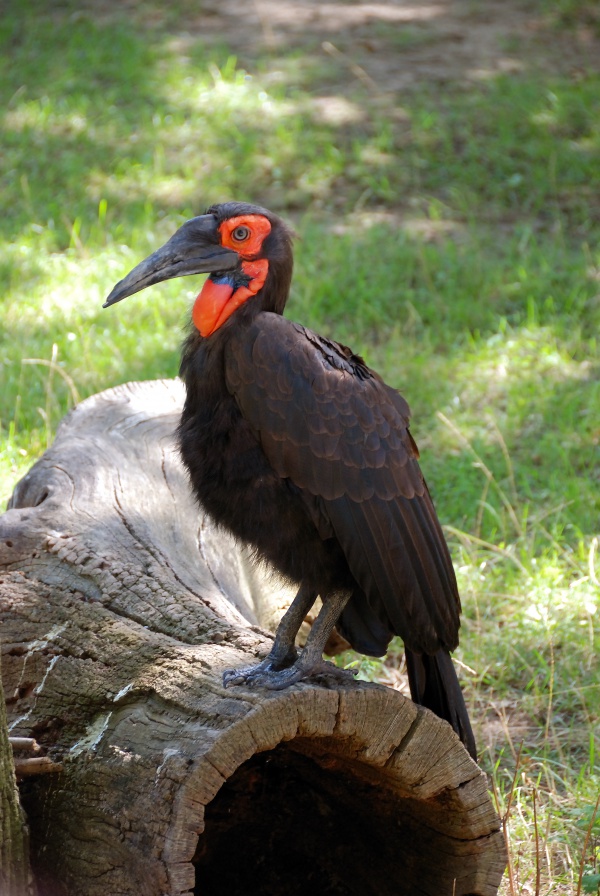Facts About Southern ground hornbill
The southern ground hornbill is a fascinating bird native to Africa, particularly from Kenya down to South Africa. These impressive birds thrive in woodlands and savannas, where they primarily hunt insects and small animals on the ground. With a lifespan of 50-60 years, they take their time to mature, reaching sexual maturity between 4 to 6 years old.
These birds hold a special place in the cultures of southern Africa but are currently facing significant threats. Habitat destruction, hunting, and certain cultural beliefs have all contributed to a decline in their numbers. Consequently, the southern ground hornbill is classified as 'Vulnerable' worldwide and 'Endangered' in certain countries.
You can easily recognize these birds by their striking black feathers, red patches on their face and throat, and white tips on their wings. They typically live in groups of 5 to 10 and are famous for their loud calls, which can be heard up to 3 kilometers away. Their diet includes reptiles, insects, and small mammals, and they rely on large trees in the savanna for nesting.
Breeding is a team effort for these hornbills. Breeding pairs are always supported by other group members, and young birds must first serve as helpers before they can breed successfully. Juvenile birds depend on their parents for one to two years before becoming independent. Interestingly, these birds breed every three years, laying one to three eggs but usually only raising one chick.
Conservation is critical for the southern ground hornbill due to their slow reproductive rates and the numerous threats they face, such as habitat loss, hunting, and cultural practices. Major threats include human persecution, agricultural expansion, and habitat destruction. Conservation efforts, including captive breeding and reintroduction programs, are essential to boosting their population.

 Mauritania
Mauritania